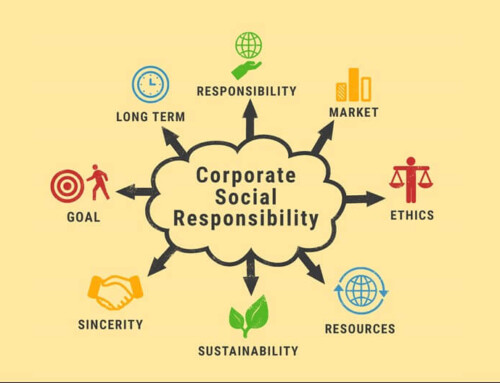These days, more and more employees are soul-searching when it comes to their jobs. If that sounds like something that would be in direct opposition to work, well, it no longer is. Some of the key standards that people have for their employer have changed in the last few years.
Today, employees want to feel like their contributions ─ and that they ─ are valued by their employer. Unfortunately, this does not happen often enough. While 82% of employees say it is important for their organization to see them as a person, not just an employee, only 45% of employees believe their organization sees them this way. (1)
This does not always mean that the employer does not value their employees. Sometimes it is a communication breakdown. Leadership must learn to not only view employees as valuable but also find ways to give their work greater purpose. Doing so will send a clear message to employees that the work they do, and their role at the company, truly makes a difference.
What are effective ways to put this idea into practice?
DEFINE YOUR ORGANIZATION’S GREATER PURPOSE
Chances are, when the company first started there was a greater purpose in mind than merely being profitable. Making a profit is important, of course. But it’s likely that the origin was among the top reasons why businesses are founded. Someone wanted to do things better, fill an unmet need, or seize an opportunity. (2)
It is easy to overlook the vital concept of a higher purpose while enmeshed in the daily grind. And if the deeper meaning behind the organization gets forgotten at the leadership level, imagine how nonexistent it is to employees further down the corporate ladder.
Before you can inspire your employees to believe in the company’s greater purpose, leadership must feel a connection to it themselves. Getting to this point starts by defining what your organization stands for and what it contributes to the world. Without defining the meaning behind the purpose, it’s just a lofty aspiration and employees won’t meet their objectives or feel fulfilled.
Employees must understand that the meaning is significant enough for them to do what they do. This, in turn, will have an impact on the organization and the wider world. But before any of this can take place, it’s important for details to be ironed out.
Put the mission of the company in writing. It’s likely that you already have a mission statement, but this exercise requires something that has more of an altruistic slant. Include points such as:
- Why your company exists.
Clarify what business your organization is really in based on your beliefs, values, and future plans. For example, your organization may manufacture pharmaceutical products. However, its real business is helping people live longer, more fulfilling lives. Additionally, help your employees understand how the real business you are in impacts your policies, standards, attitudes, beliefs, behaviors, operations, and social interactions. - How your organization’s products or services benefit society.
Provide employees with meaning to what your business stands for and does in the interest of the greater good for the industry, your community, and the world. Dig deeper so that there is a better understanding of the key differentiators that add more to the world they seek and want to create. - The ways in which employees play a crucial role in fulfilling the company’s greater purpose.
Define the ways in which employees are vital to the organization’s greater purpose. They aren’t just responsible for using the tools and strategies. They are essential to the human connections that are the heartbeat of business operations and bringing the purpose to life. So, be very specific about the ways in which they bring life to your organization. - The techniques used to assist charities and build philanthropy into the organization’s culture and why this is important.
Aid employees in understanding your philanthropic values such as donating time, services, products, or money. Others might include sharing knowledge, going the extra mile, always looking to improve, building or strengthening communities, investing in relationships, finding team opportunities, and similar ripple effect type efforts. A mindset of giving sets apart an organization from others especially when it’s built into the company culture on a daily basis.
Drafting this elevated mission statement should be a project that involves every member of leadership. Do not leave anyone out. Being inclusive will not only set the right tone for the team at large, but it will also open the possibility of uncovering more inspiration about the greater purpose.
Once the mission statement has been completed and approved by the proper parties, create fanfare around it for your employees. Make a big announcement about it via a company-wide meeting with a celebratory tone. Do not dilute the importance by simply sending out a mass email about the statement.
HAVE CAREER DEVELOPMENT CONVERSATIONS
How do you help employees find a connection to the company’s greater purpose once leadership establishes it? Do all employees have a personal connection to the company’s purpose? Having regular career development conversations with them is one excellent way to accomplish it.
These check-ins should be required for all managers who have direct-report employees. Three to four months is a great cadence, but even five to six months is better than not having them at all. Since not every employee has easy access to leadership, the responsibility of mentoring them falls on their manager.
Each employee should be encouraged to play an active role in their career development check-ins. Managers should make it crystal clear that their reports’ voices will be heard and that what they say will be taken seriously. People feel more engaged when they feel like they are being heard.
PRO TIP: More frequent check-ins outside of career development is absolutely essential to social interaction, engagement, and morale. One study found that 80% of employees have only spoken to their manager once in the last 10 days (3) It’s hard to find meaning in a career when employees aren’t connecting with the very leadership that drives the purpose. Therefore, prioritize time for employees.
ESTABLISH AN INCREASING RESPONSIBILITY TREK
Hardworking employees, the ones you want to retain, crave responsibility. They take pride in their work, and they embrace greater levels of responsibility. These workplace “unicorns” are the type of worker that every employer wants on their team.
A “unicorn” is an employee who can seemingly do it all and who you can depend on in any scenario. They always come through, even in a pinch, and they have a solutions-oriented mindset. On the positive side, if you can keep them, “unicorns” will help set up your company for success.
However, on the negative side, “unicorn” employees tend to be the most sought after by your competitors. You must not assume they are satisfied, or you risk losing them.
Be proactive and give your “unicorns” the increasing responsibility trek they crave. Revisit their role often, (at a minimum of every three months), and directly ask if they would like any new responsibilities, take on additional work, or try something new. In addition, managers should come to the table with thoughts of their own on what kind of high-priority projects might be well suited for each of their high-performing direct reports.
A PEOPLE-FIRST APPROACH FOR BETTER ENGAGEMENT
While it seems obvious, taking a people-first approach is in fact a savvy business practice. By demonstrating that you value employees both as contributors and as your organization’s best asset, you foster improved engagement and spark their motivation. In this way, you make your employees happy and they respond by helping to make your company successful.
Considering a travel incentive program to engage and motivate employees? Contact Gavel International to learn how to infuse the program with purpose.
_______________________
SOURCE(S):
1 https://www.gartner.com/en/articles/employees-seek-personal-value-and-purpose-at-work-be-prepared-to-deliver
2 https://www.legalzoom.com/articles/top-reasons-people-start-their-own-business
3 https://www.gethownow.com/blog/return-to-work-report







